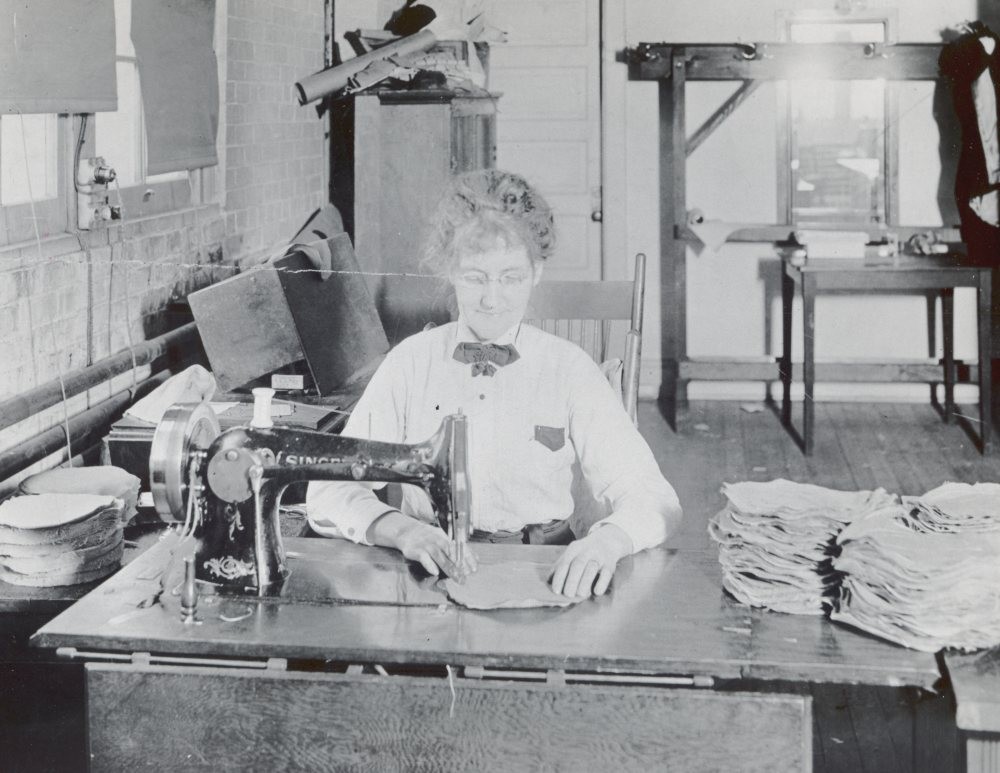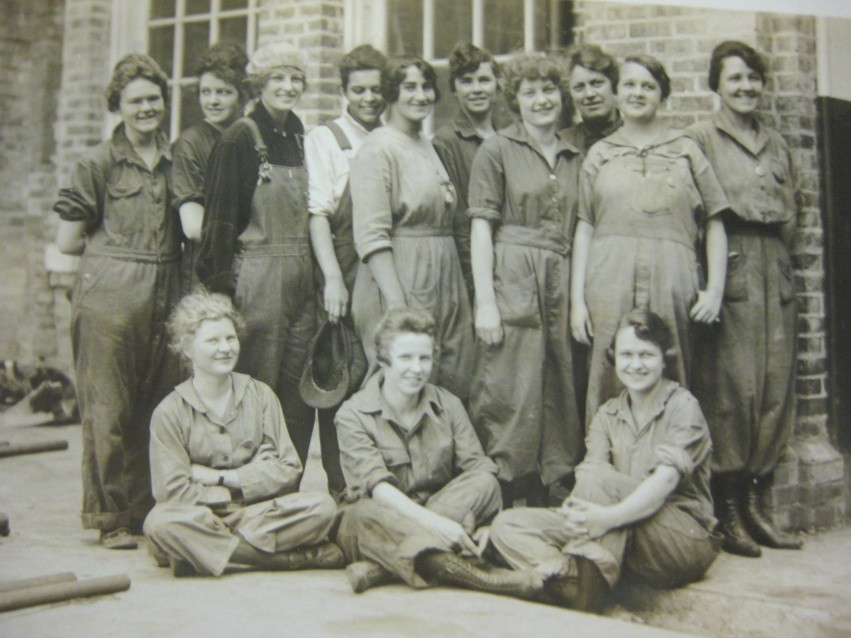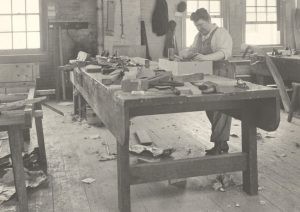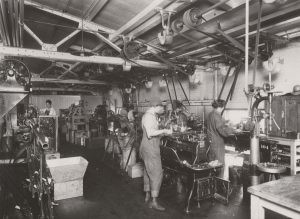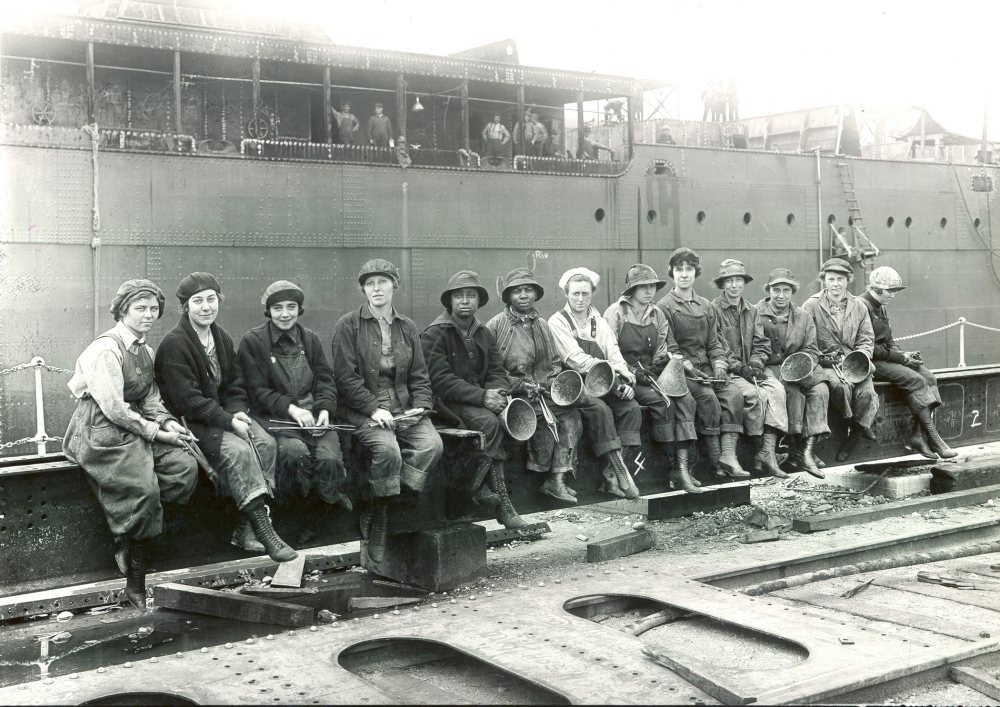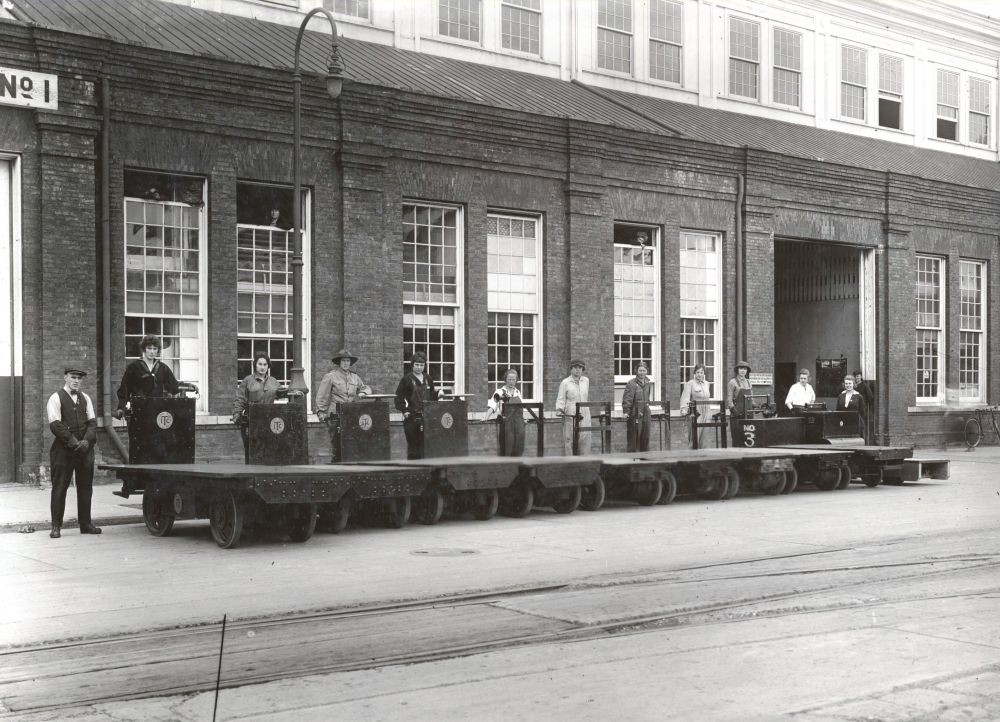World War I: Wartime Workforce
World War I drastically changed the face of America's workforce. As husbands, sons, and brothers left for military duty, wives, daughters, and sisters took their places. Women entered the Shipyard in unprecedented numbers as both civilians and enlisted personnel.
During 1917 and 1918, more than 200 women found employment at the Shipyard. Most were registered as "helper generals," with the insertion of the word "clerical" or "typist" added to their title. They also worked on the piers and in the shops as sewers in the sail loft, electric truck operators, crane and power machine operators, in lumberyard jobs, and as rivet heaters, catchers, and passers.
The first woman to retire from the Shipyard was a craftsman named Radina Petersson Olsen. Prior to working in the Shipyard, this Norwegian immigrant earned her wages making tents and sleeping bags for prospectors during the Yukon Gold Rush. In 1905, she started working as a sail loft worker and became one of the first women employed at the Shipyard. She retired twenty years later on April 10, 1925.
Here Radina "Dina" Olsen is pictured making gunpowder bags from gray silk, 1919.
As America's labor shortage became increasingly serious, women, like these Shipyard workers, began filling more and more non-traditional positions, some of them even wearing pants for the first time, c. 1919.
Female joiner, 1919.
Training department for Machine Shop, 1919.
Rivet heaters, catchers, and passers, 1919. One of the most iconic World War I images taken at the Shipyard.
These electric trucks all had female operators, 1919.

